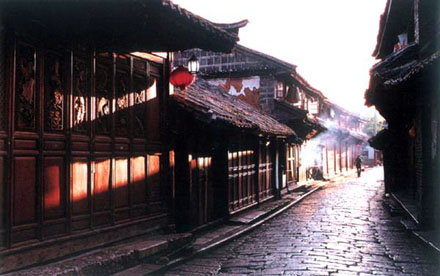(Ecns.cn) – Lijiang is a UNESCO World Heritage town located in the northwest part of Yunnan Province and the historic home of the Naxi people, who constituted almost 60 percent of its population in the past. However, the ethnic group has become a rare sight, as an increasing number of noisy bars and shops have overtaken the town.
Previously a tranquil oasis away from the mad rush of commercialization and industrialization, Lijiang is now a fusion of indigenous Naxi architecture and culture with many other external influences. Waiters dressed in ethnic minority costumes can be seen working in bars loudly pumping pop music, for example.
"Many people are criticizing the commercialization of Lijiang. But for the people who live in the city, they drink coffee, enjoy big villas and use computers, so why should they come here and blame us?" said Mou Xin, a businessman who opened Lijiang's first bar.
Yet Mou still recalls the Old Town of Lijiang over a decade ago. The quaint cobblestoned streets, bubbling freshwater streams, bright flowering crab apples and Naxi grandmas sitting on stone steps sewing their clothes were what brought him to this "heaven" in the first place.
The Naxi governor who saved Old Town
The Old Town of Lijiang was built about 800 hundred years ago at the end of the Song Dynasty (960-1279). Historically it was one of the most important transportation centers on the ancient Tea Horse Road, and an economic, political and cultural center in the region.
In the 1980s, the town became more prosperous. A large number of Naxi people began building villas with the money they had earned, and many old houses were bulldozed to make room for construction.
Alarmed by these developments, Professor Zhu Liangwen, from the Yunnan Institute of Engineering, wrote a letter titled "Urgent Appeal" to He Zhiqiang, who was governor of Yunnan Province at the time. Zhu warned that the wave of construction was like a sharp knife stabbing into the heart of Old Town.
After reading the letter, Governor He made an immediate response and issued instructions. To him, preservation of the town was needed not only to protect the indigenous Naxi architecture and culture, but also for its tourism possibilities. He instructed local officials to investigate carefully and conduct research on the issue, and come up with a plan to protect the Old Town as soon as possible.
Even today, local taxi drivers speak of Naxi Governor He Zhiqiang, who rescued Old Town from potential disaster.


















